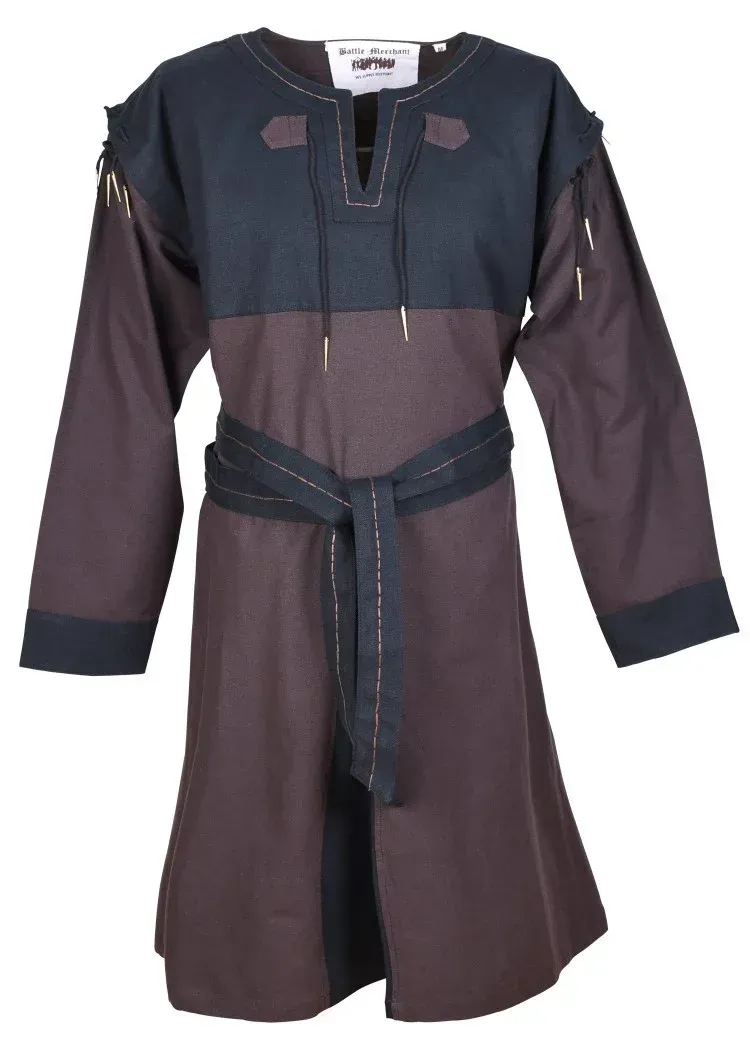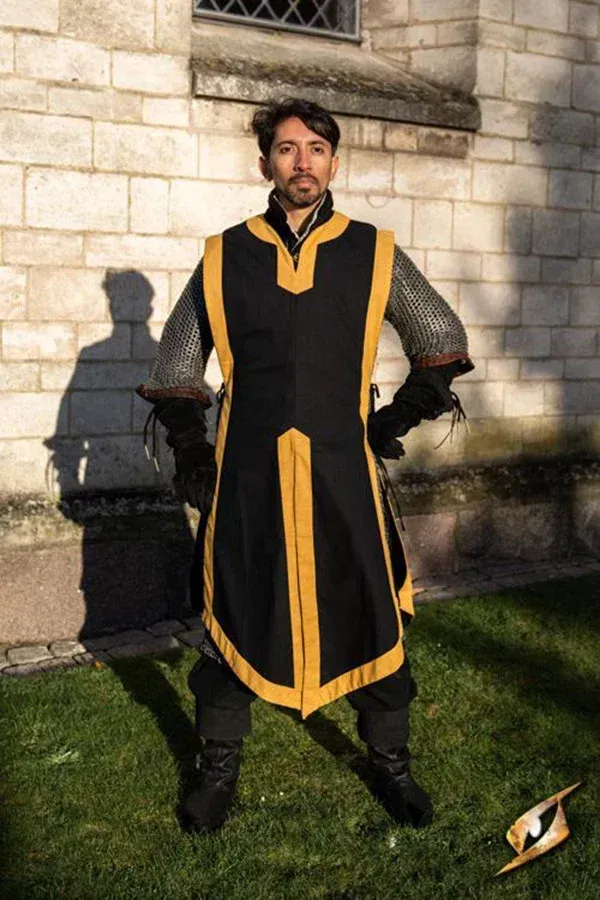Medieval Tunic Vs. Medieval Tabard
In the medieval era, the selection and use of clothing served not only to protect against the elements but also reflected the social status, regionality, and even religious beliefs of the wearer. Two notable garments from this period are the tunic and the tabard. Both have historical relevance and have left a significant cultural mark. Below, we will explore in detail the characteristics that define them and the aspects that differentiate them.
Medieval Tunic
The medieval tunic is an iconic garment that symbolizes much of the European medieval wardrobe.- Origin and Use: With a heritage from Roman and Merovingian clothing, the tunic was an essential garment in the wardrobes of both men and women. Depending on the period and social status, the length, material, and embellishments varied, allowing both upper and lower classes to reflect their respective positions in society.
- Materials and Construction: Tunics were mostly made of linen, cotton, and wool, reflecting the resources available in different regions. Generally, women wore longer tunics, while men opted for shorter versions.
- Decoration and Accessories: While tunics could be simple, those belonging to nobles were adorned with clasps and belts made of precious metals and even embedded with gemstones, symbolizing wealth and power.
- Styles and Variations: Over time, tunics evolved; the upper classes preferred body-hugging designs, while the peasantry remained with more somber styles.

Medieval Tabard
The medieval tabard is another distinguished garment, often worn over the tunic for multiple purposes.- Origin and Use: Originally, the tabard functioned as a cloak to provide warmth and display status. Over time, it became a separate garment, used both for ceremonies and more practical functions such as in battles.
- Materials and Construction: Similar to tunics in terms of fabric, they were frequently lined for greater durability.
- Decoration and Accessories: Also decorated with embroidery and clasps, although its function remained more practical and less ceremonial than the tunic.
- Styles and Variations: Variations occurred in both length and design, depending on the specific use, whether as a short cloak or a longer overgarment.

Detailed Comparison
| Attribute | Medieval Tunic | Medieval Tabard |
|---|---|---|
| Length and Fit | Generally longer, covering the torso and legs. | Shorter, used as a cloak or overgarment. |
| Function | Basic clothing item used daily. | Provides additional protection, signifies status. |
| Decoration and Accessories | Adorned with various decorations depending on social status. | Similar decorations, but with a practical focus. |
| Styles and Variations | Evolved according to fashions and social classes. | Adapted to its use as a cloak or overgarment. |
Through this comparison, we can observe how medieval clothing not only served a practical function but also reflected the society of those times. Both tunics and tabards are distinctive of medieval fashion, each with its peculiarities and specific purposes.
















